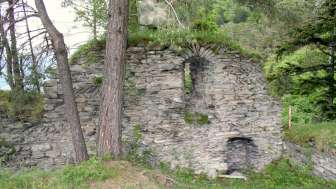Falkenstein Castle

Falkenstein Castle was first mentioned in a document on December 11, 1338 as Valkenstein. In the "Buoch der vestinen" of 1410, it appears under the name Falkenstain. Between 1365 and 1389, Ulrich von Falkenstein is mentioned, although his noble origins are unclear.
The Churwalden land register from 1508 contains references to a Falckenstainßwyß and a Falckenstain-Acker. Later, the castle also appears under the names Falckenstein and Fackelenstein, although it is always the same complex. The name Fackelenstein is a later variation.
At the beginning of the 16th century, Kury Butyg von Facklenstain, who lived in Zizers, had a coat of arms with two torches, although he was not a nobleman. On September 27, 1518, he is documented as Chuerin Buttig von Zizers. There is no evidence of a noble family who permanently named themselves after the castle. It is not known when the castle was finally abandoned.
The remains of the walls show that the castle had at least two construction phases. The older part includes the tower with a floor plan of around 12 × 8 meters and a wall thickness of 1.9 meters. This is followed by a rectangular palas measuring 12 × 13.5 meters. The masonry technique with opus spicatum and a vertical wall joint indicate later construction phases.
No traces of interior construction are recognizable in the palace itself. A narrow embrasure with a bench, a pouring stone with a spout and a door with beam holes are striking. Below the main building, a circular wall follows the edge of the cliff. The presumed entrance gate was to the east, but is now buried.
The complex also included a lower-lying outer bailey, the remains of whose wall are still visible. It was between 0.75 and 1.05 meters thick and is covered in rubble on the hillside. In the north-west, the base of a gate with a beam channel is still preserved.
Report error (ID: 9f367896-39be-4530-92ef-e79180157ce2)
Contact us
Landquart municipal administration
Rathausplatz
7302 Landquart
Switzerland



